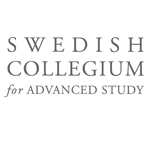
Photo credits:
-
Ümit Kurt (Incoming Fellow 2024-25)
Assistant Professor, School of Humanities, Creative Industries and Social Sciences, College of
Human
and
Social Futures, University of Newcastle
During his time at SCAS, Dr. Ümit Kurt will work on a book project titled Cogs in the Wheel: The
Dynamics of Participation in the Armenian Genocide. Drawing upon primary sources from Armenian,
Ottoman-Turkish, German, British, American, and French archives, as well as court records, memoirs,
personal papers, and oral testimonies, his research will explore the lives and legacies of genocide per-
petrators who actively participated in the annihilation of Armenians and plunder of their wealth and cultural
heritage. This project reconstructs the background, motivations, and actions of the perpetrators at the
local and provincial levels, a largely understudied dimension of Armenian genocide history. Through
social network analysis and micro-historical portraits, Cogs in the Wheel aims to shed light on the political
and socio-economic factors that reinforced the foundations of a genocide in the making and demonstrate
how the policies of Ottoman central authorities found fertile ground in provinces and districts across the
empire.
Concentrating on the micro-level, Dr. Kurt will excavate the practices of ordinary men and women who
chose to voluntarily participate in a violent act of such massive scale. By combining socio-political and s
ocio-economic historical methods, he will treat Cilicia (today known as southern part of Anatolia, near
both the Mediterranean Sea and the Gulf of Alexandretta, including the provinces of Mersin, Aintab,
Marash, Adana, Osmaniye, Antakya, Tarsus) as a microcosm to elucidate the complex reality of violence
and highlight its causes, dynamics, and effects. The project fills gaps in our knowledge of the perpetrators:
who they were and how they compared to the rest of the Turkish population. The aim here is to recover
the story of these actors from these particular towns and hereby revealing the perpetrators and their active
involvement in the destruction of Armenians at the local level. This project seeks to shed light on such
perpetrators by analyzing simple, objective features of their backgrounds and careers. It hopes to do this
by examining a different dimension of the genocide, highlighting the human element—the actors, their
motives, and their actions— which ultimately bore responsibility for the catastrophic loss of life.
This page will be updated during the summer of 2024.






